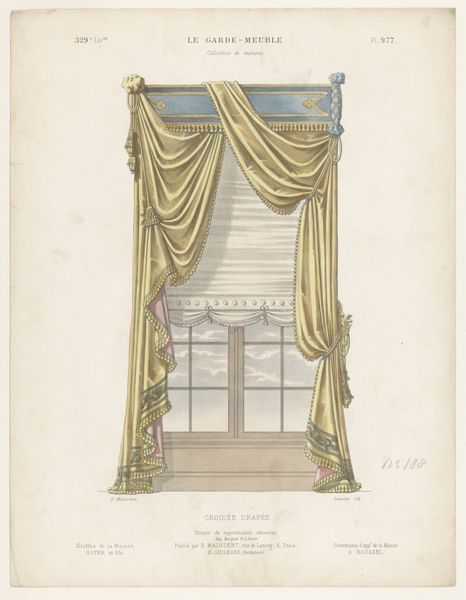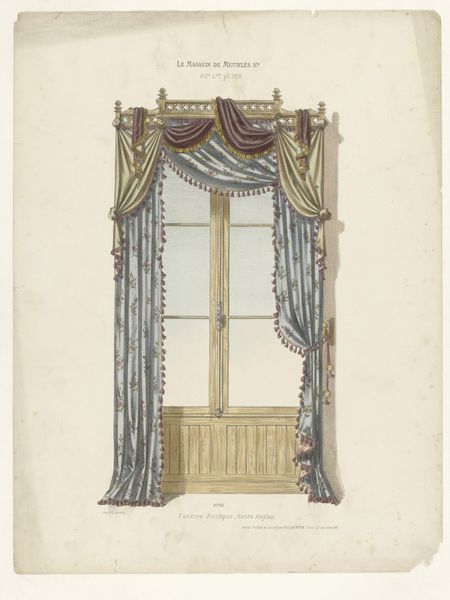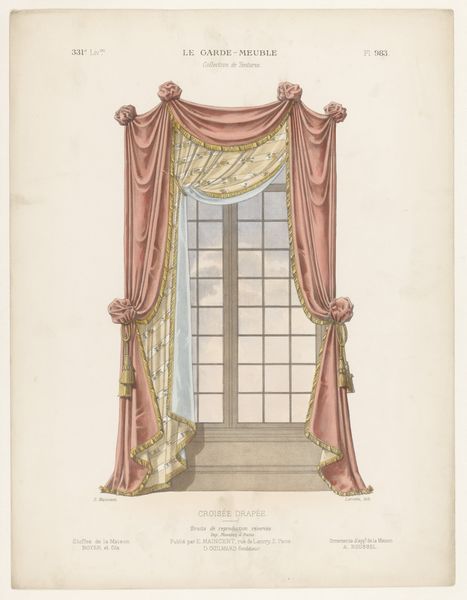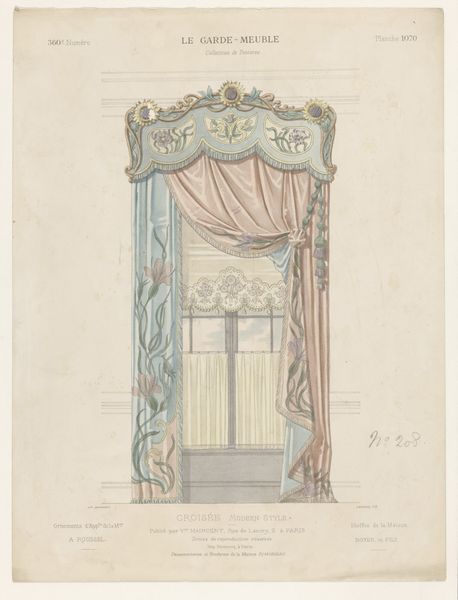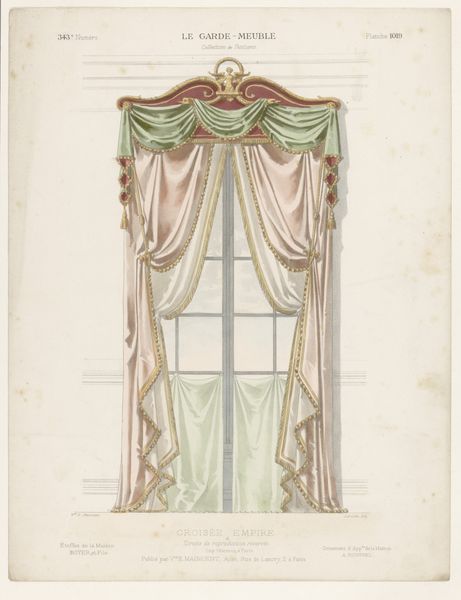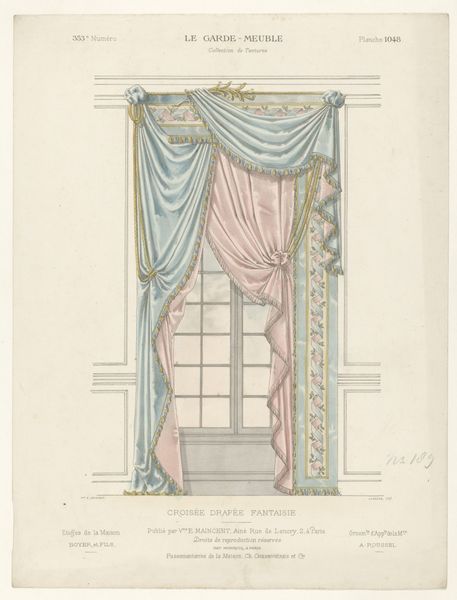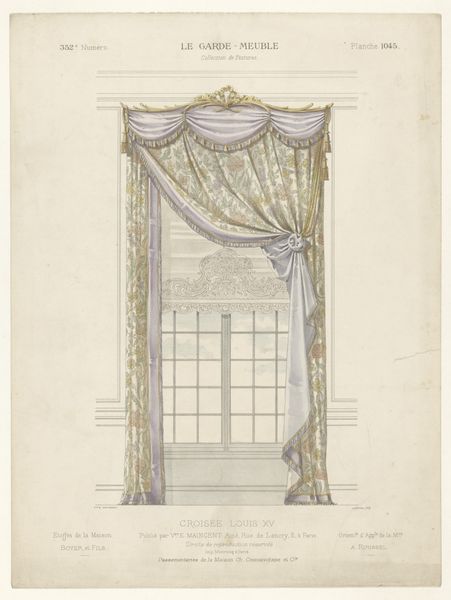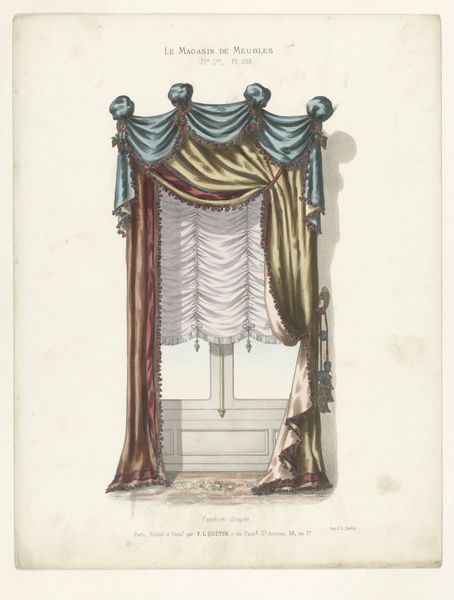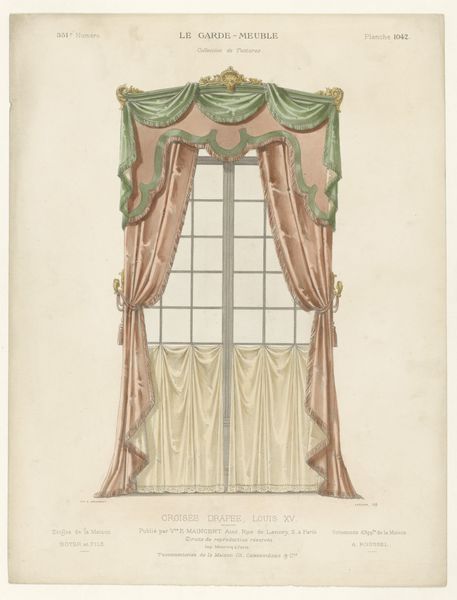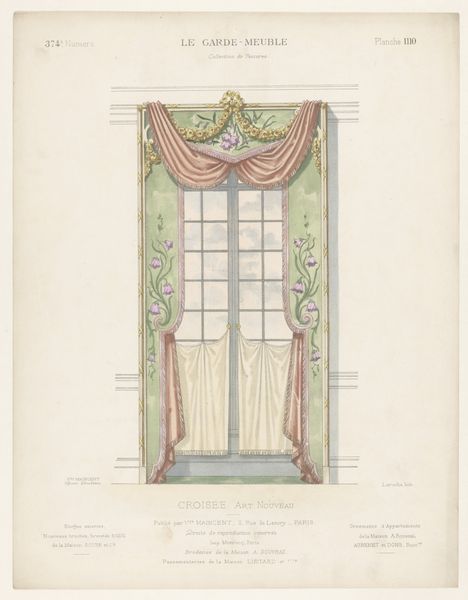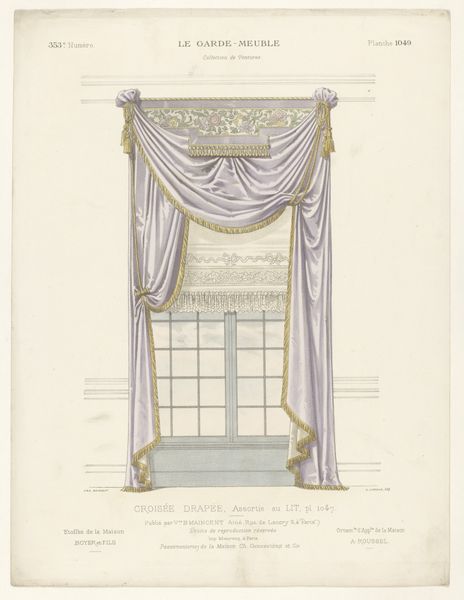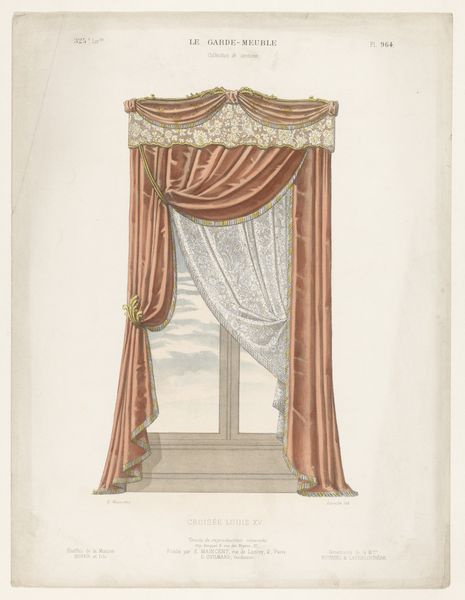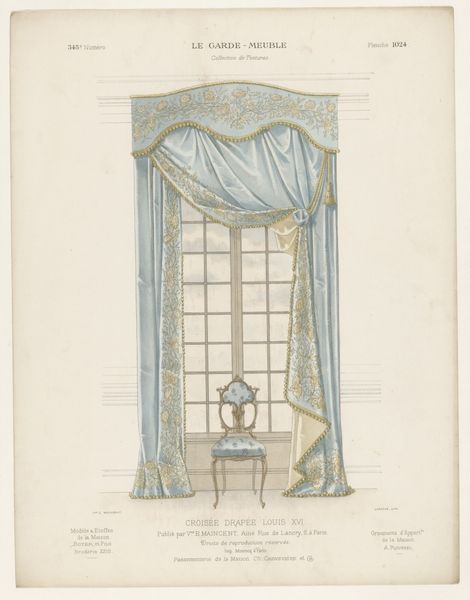
Dimensions: height 358 mm, width 278 mm
Copyright: Rijks Museum: Open Domain
Editor: Here we have Léon Laroche's "Venster met gordijnen," a watercolor from somewhere between 1885 and 1895. The details in the drapery are exquisite, but what strikes me most is how theatrical it feels, almost like a stage curtain. What do you see in this piece? Curator: I see a reflection of the rigid social structures of the late 19th century embedded within what appears to be a simple window treatment. Consider the immense labor required to create and maintain such elaborate textiles. Who would have access to these interiors, and who would be excluded? Think about the socio-economic implications tied to displays of wealth. How do these window dressings serve as silent indicators of status and power? Editor: That's fascinating; I hadn't considered it that way. I was more focused on the purely aesthetic elements – the colors, the textures. Curator: Precisely. By understanding the period, we can see beyond the aesthetic. The "decorative art" style and "rococo" elements present in this work were statements. Ask yourself, whose stories are not being told through the lens of these opulent displays? Where is the representation of those who produced these fabrics or those living without these embellishments? Editor: So, the artwork is not just about the curtains, but about the context in which they existed? Curator: Exactly! By viewing “Venster met gordijnen” as more than just a pretty picture, we begin to see it as a social commentary, even if unintentional, and engage in a richer, more nuanced understanding of the artwork and the society it reflects. Editor: This has really changed my perspective. It's amazing how much history can be embedded in something that appears so simple. Curator: Indeed. Art encourages us to challenge assumptions and consider diverse voices and experiences, enriching our appreciation for art and society alike.
Comments
No comments
Be the first to comment and join the conversation on the ultimate creative platform.
